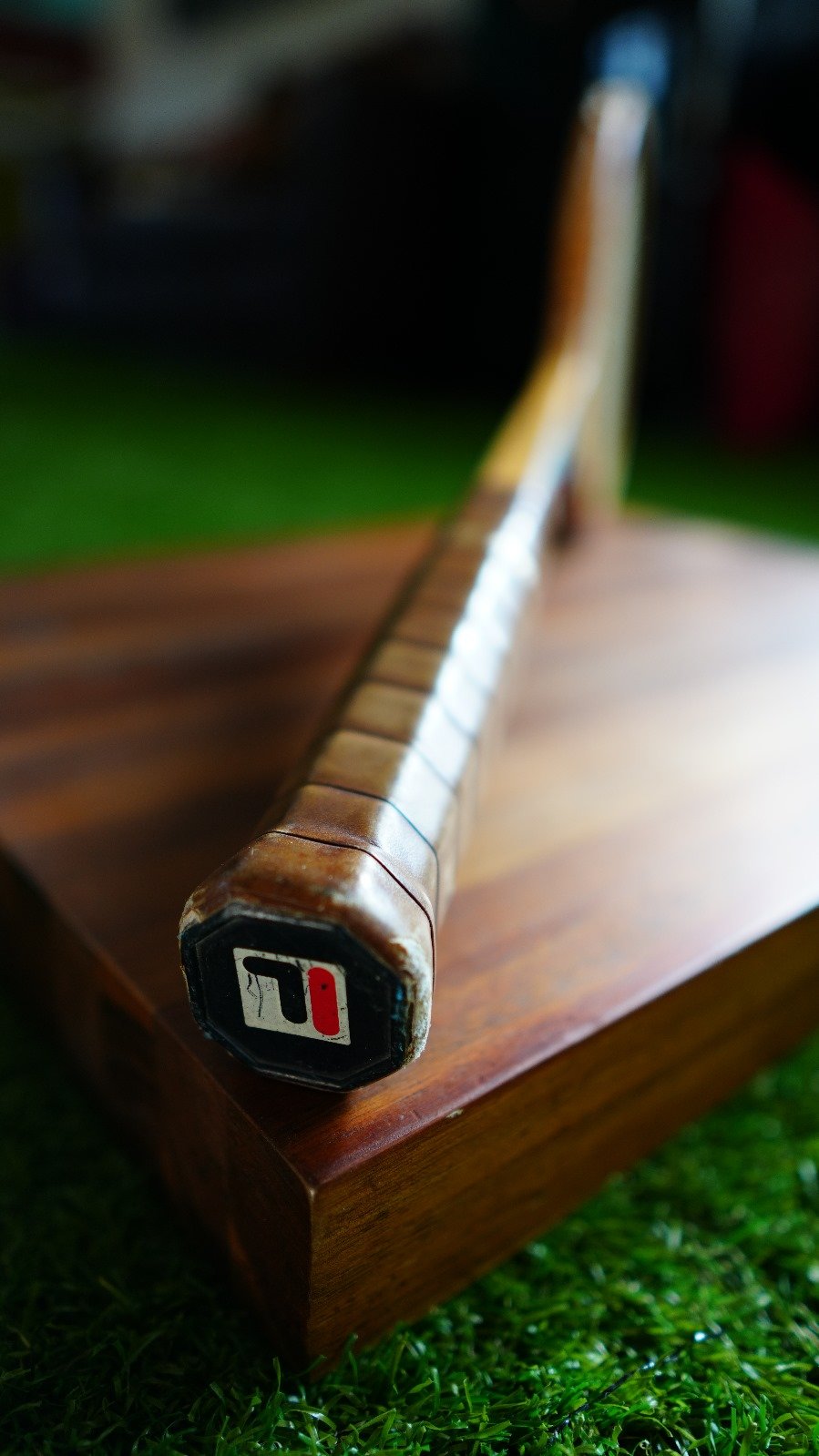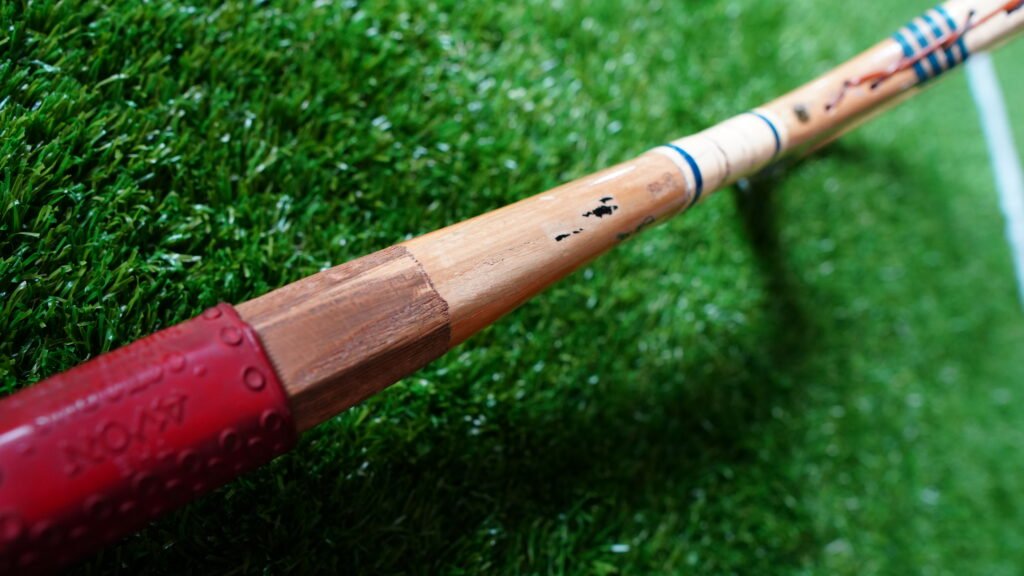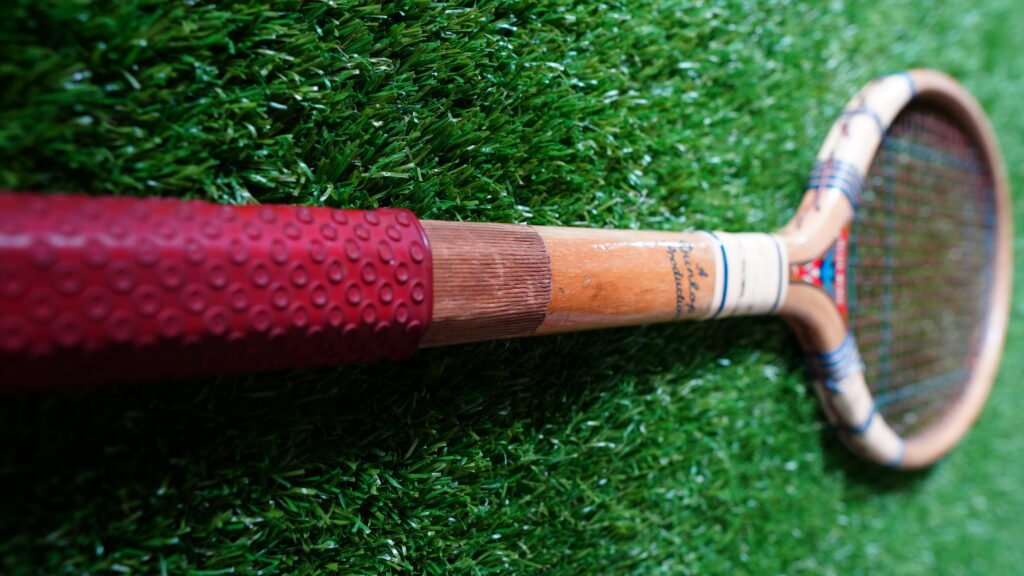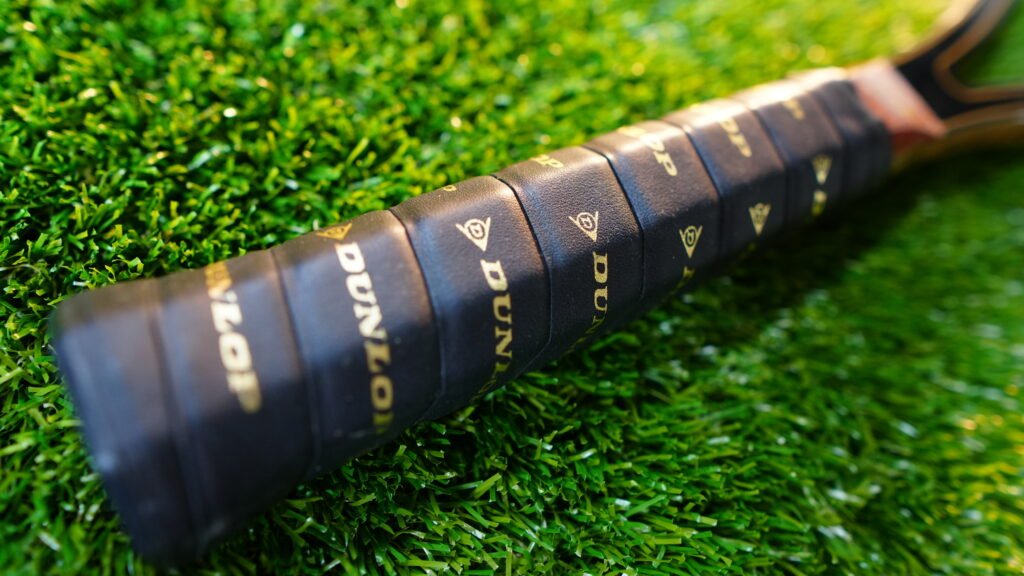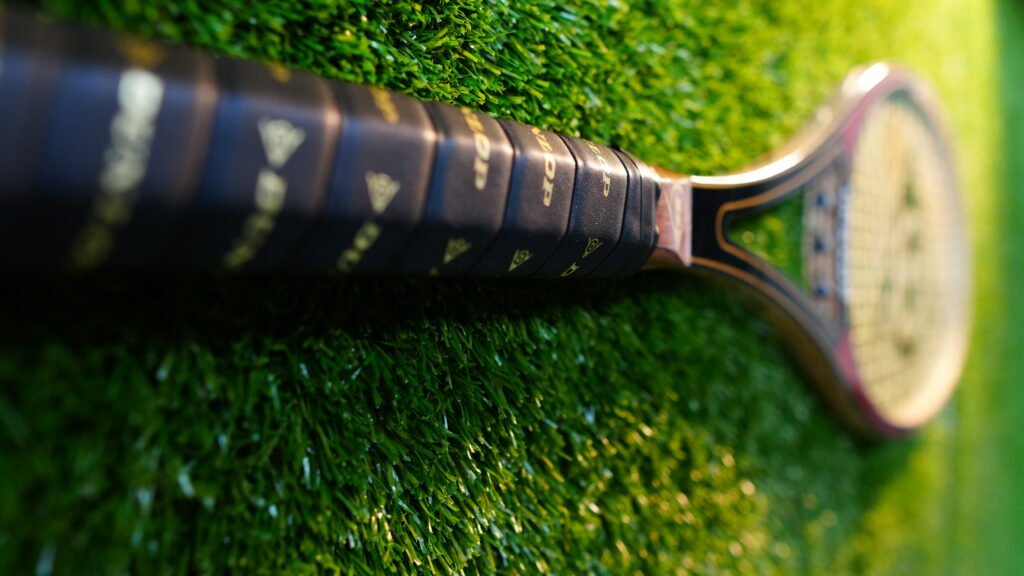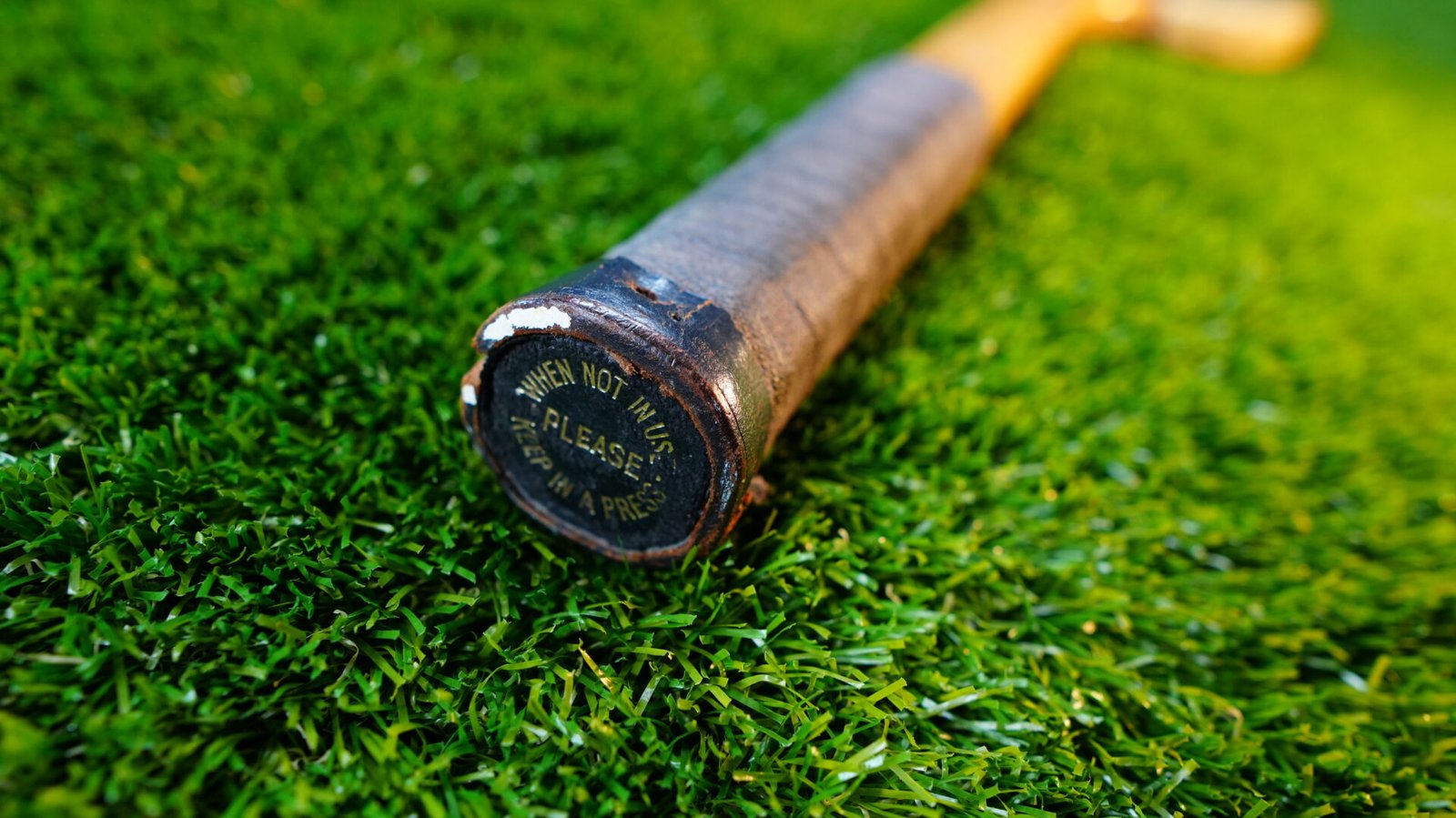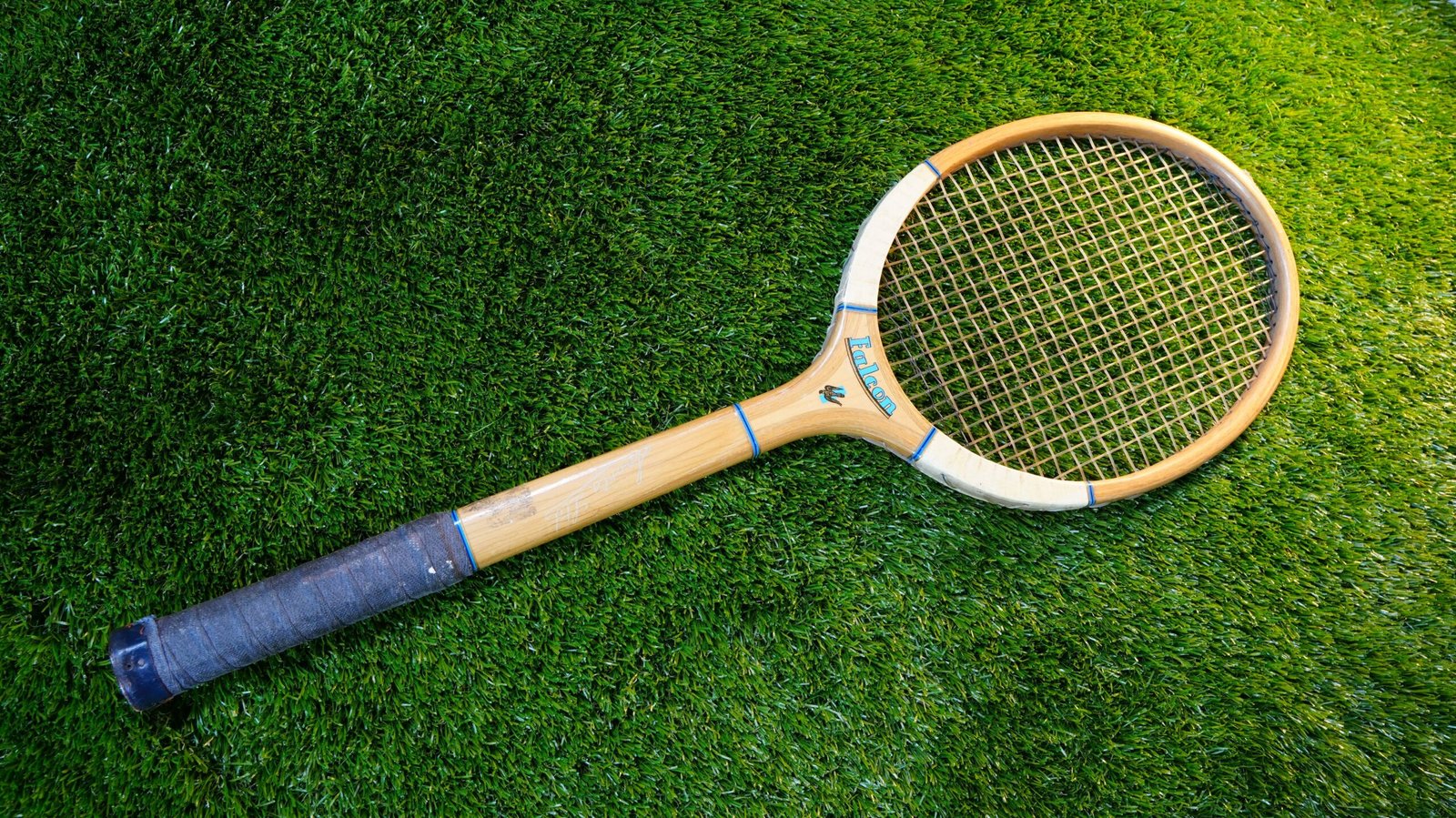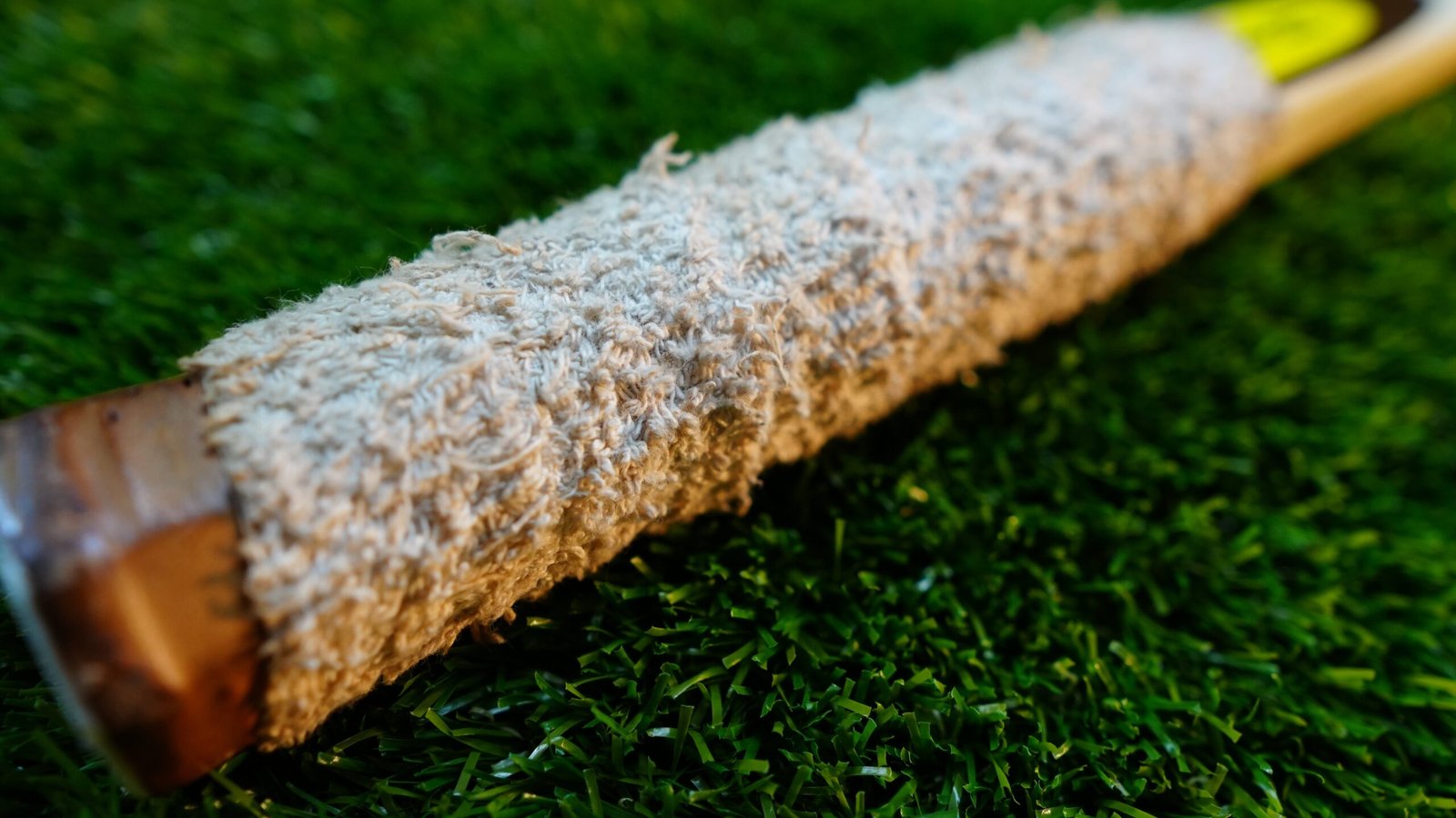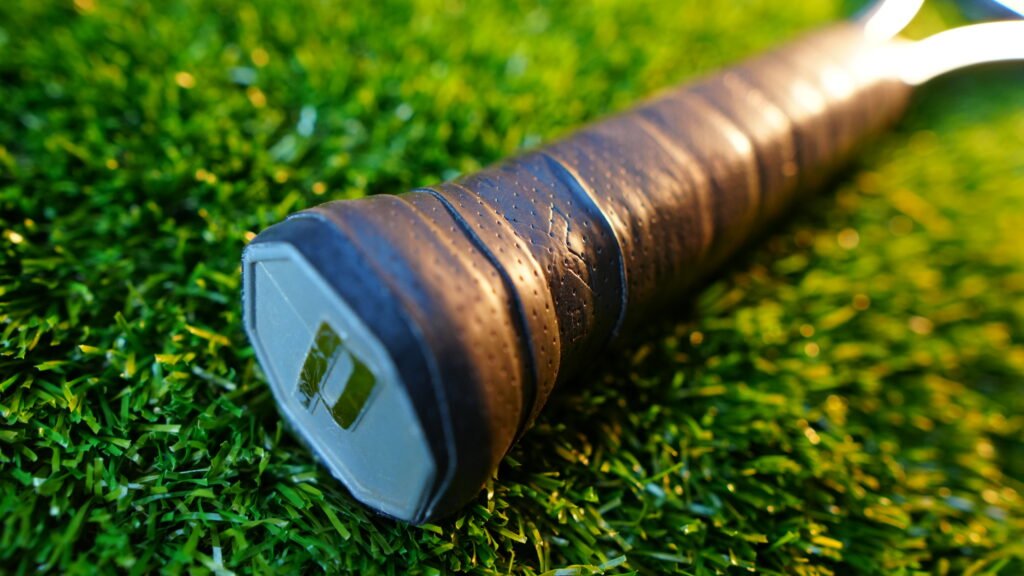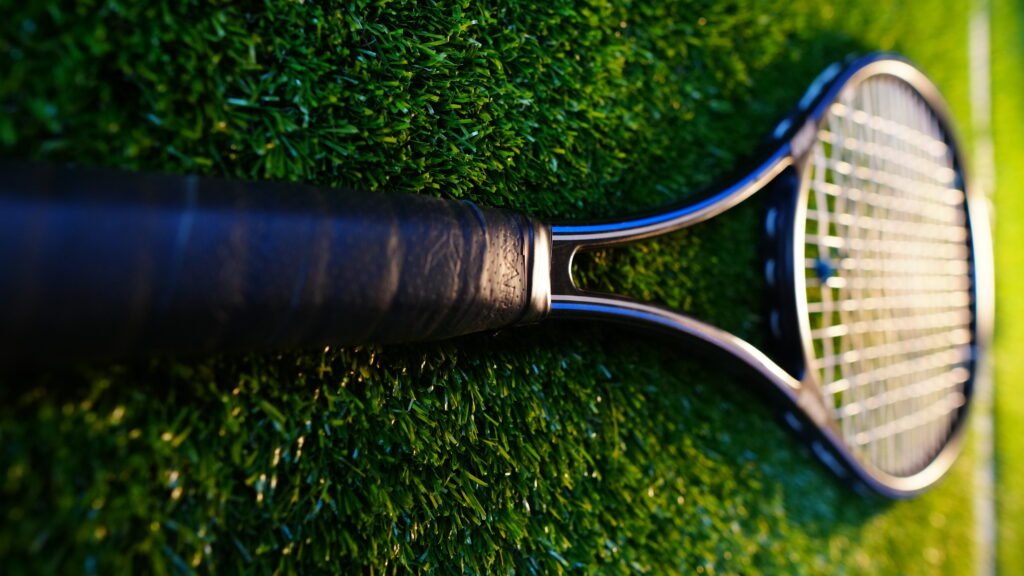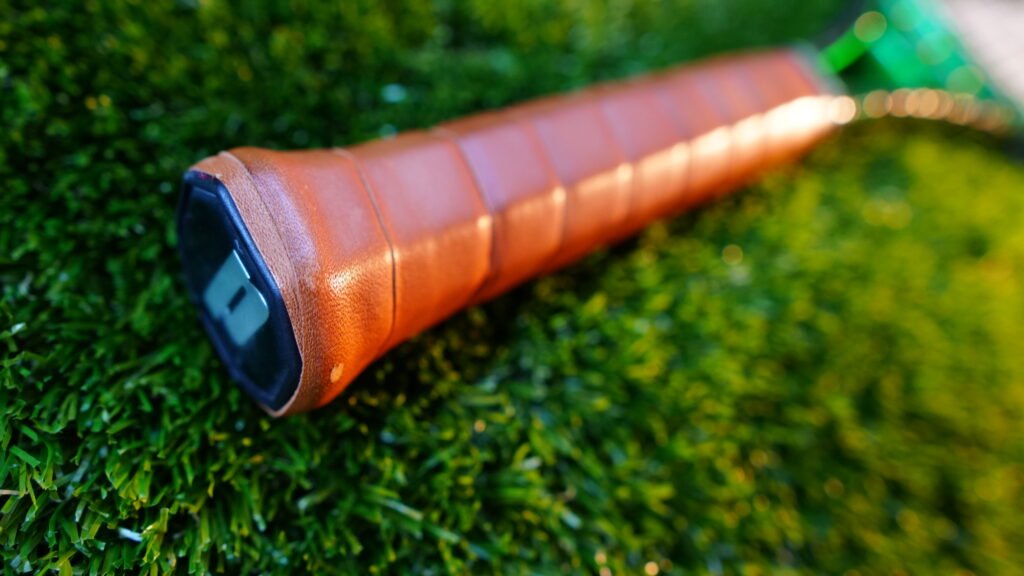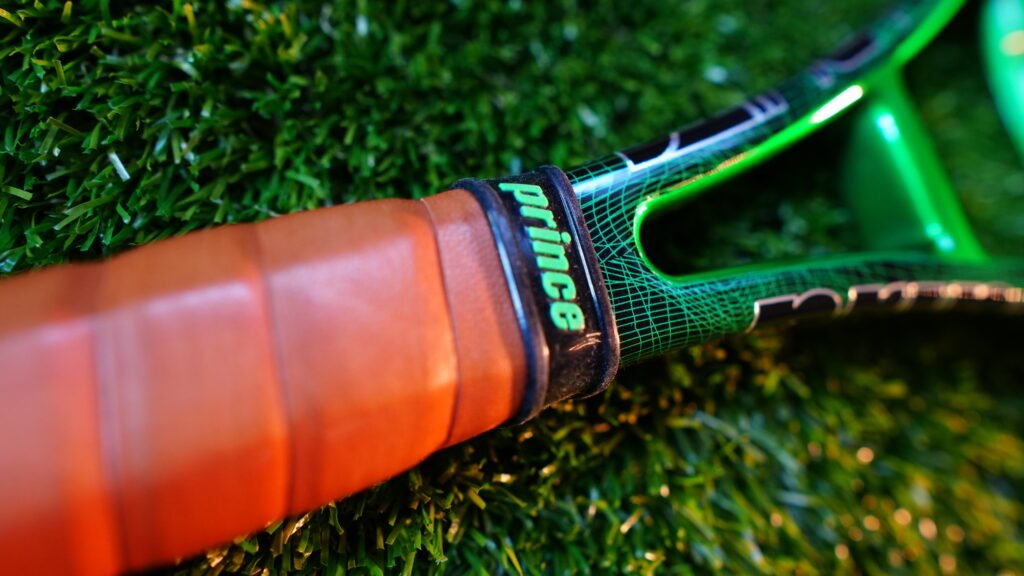Grips went from shaped wood, to cloth, to leather, to toweling and to synthetics.
Let’s go right back. In the 15th century rackets were made of cork wrapped in cloth, with strings fashioned from dried sheep’s intestines. The cloth handle was used up to 1920! Often the cloth came off, and so the cut grooves in the wood, and often held the wooden handle itself.
It may seem unbelievable but even in 1900 most tennis rackets were entirely wood with no special grip. Sometimes the wood was shaped or grooved to make some kind of purchase on the racket possible, but the big invention of the day was layers or laminates stuck together.
In 1900 the first additions was tightly wound cloth or cotton/canvas on the handle which at least absorbed some sweat. It could be cleaned and re-wound.
In 1925 Dunlop invented a special “octopus” rubber grip helped by the burgeoning rubber industry in the UK. I have one of these super rare rackets with this first grip.
Actually Dunlop produced some of the best grips, and from 1930 almost all of their rackets were genuine leather. Additionally they embossed their grips with gold lettering, which was stunning but sadly wore off in a few months of heavy use! Slazenger also made some stunning grips, are started reserving them for their better models like the Challenge No 1 (1965).
In 40s and 50s ome manufacturers offered perforated leather (small holes) which had been seen in golf, in driving gloves. They had better grip but wore out much faster. 1970s Donnay and Adidas worked hard to improve on this gold standard and came out with ribbed leather which added even more grip.
Leather is a natural material that has one special property. It wears specifically to the users hand and pressure. So the grip actually improves with time until it “fits like a glove” It works so well that some Pros swear by natural leather even today, 50 years later! However it is not indestructible and will wear out completely esp if not oiled or waxed (which very few people did).
However, leather has one big weakness: it was slippery when wet. In 1977 Vitas Gerulaitis wrapped his main leather grip with self adhesive surgical gauze to provide more grip and more absorption. This was only possible with sticky fabric or toweling. This set a trend and by the 80s everyone was wrapping their perfectly good leather grip with heavy sticky toweling which was grippy, but absorbed sweat and dirt and got smelly, then broke down with fluffy bits everywhere!. Again no one cleaned their grip, they just sold their racket instead!
Manufacturers Looked for a solution, and initially made the towel grips super sticky but this did not help. Then Dupont and others found the secret of synthetic rubbber. As early as 1977 you could by synthetic “overgrips” which were finally grippy in almost all conditions. People still didn’t clean them of course, so then they released overgrips around 2000. They don’t look as good as leather though!
Early Grips
The first grips were simple canvas or cotton wrap on the bare wood like this Falcon, but later, no surprise that Dunlop invented the rubber grip. On high end rackets, starting around 1925 to 1935 big manufacturers starting offering genuine leather, of increasing sophistication. It was machine shaped so that it could wrap on with minimal edges. They started stamping in their logo and then machine embossed it! Sadly the print on the beautiful embossing wore out really fast!
Later Grips
Look at this toweling over leather, just like a wolf in sheep’s clothing!
In the 70s 80s, people started adding toweling wrap as the first “overgrip” to reduce sweat (perhaps borrowed from Squash and Hockey made by componies like TerryTowel). However players rarely replaced it, so it became dirty and discolored and odorous! In 1977 chemical companies came up tacky synthetics and one of the first was Tourna Grip. But it didnt really catch on until the 90s. Around 1995 companies such as “Gripsy” released tacky synthetic rolls used by pros in 1996 and 1997 Michael Stich, Goran Ivanovic. However leather never went away because it could always be used as the main grip.
